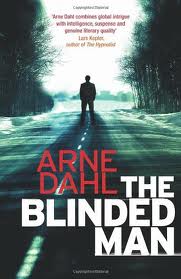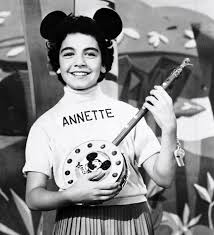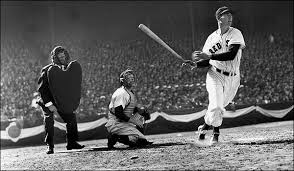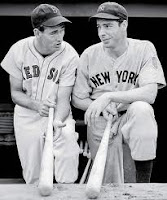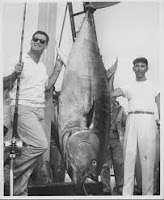 NOTE: About a year ago, I did an essay for BBC Radio 4's Open Book, about baseball novels. You can link to that post here, but the IPlayer link has disappeared, so I will try to find my original script and reprint it.
NOTE: About a year ago, I did an essay for BBC Radio 4's Open Book, about baseball novels. You can link to that post here, but the IPlayer link has disappeared, so I will try to find my original script and reprint it.
Shortly after doing Open Book, I was interviewed by The Browser, a literary website, and asked to pick my five favourite baseball novels, something the structure of the Open Book essay hadn't allowed. I went to look at that interview, but it too seems to be suffering from the internet's missing link disease. Luckily, I had the website's rough draft of the interview available, so, with a few small amendations, I offer it here...
Michael
Carlson on Baseball Novels
Why
do you think that baseball forms the basis for so many great American
novels?
In
a sense it is because baseball symbolises something that was at one
point an idealised version of American life. Today I think it is an
idealised version of a fantasy American life which is pastoral,
honest, competitive and entertaining. But the more important reason
is that baseball recreates the quotidian nature of existence.
Baseball is an everyday game. They play one hundred and sixty-two
games a year but at the end of each one you win or you lose and then
you start over, unlike real life. So it gives you a vast canvas on
which to paint an equivalent of real life, but one that is more
dramatic each day and builds to a more dramatic climax as the season
comes to an end.
What
do you personally enjoy so much about the game?
I
think baseball is the most interesting game because of its variations
on a simple theme. It is almost like an enclosed table game in that
you have a very simple structure within which myriad possibilities
take place over and over again. It is also the only sport I can
think of that puts an individual confrontation into the middle of a
team game. Even more so than something like cricket, you have this
battle between the pitcher and the hitter which is the centre piece
of the game. But within that you also have a team sport. If you look
at Japanese baseball, for example, they take the team sport part of it
much more seriously than the Americans do and they look at it as a
team sport in the sense that we might look at American Football or
soccer as being a sport where you have to cooperate with all
nine players together. I worked for Major League Baseball for four
years and during that time I got a lot of exposure to baseball
players and I was constantly fascinated by the depth within the game,
the vast amount of information I just didn't know about it.
I
know you could have chosen from any number of books about baseball so
what made you pick, Robert Coover’s, Universal
Baseball Association?
This
is my favourite of all the baseball books and I actually think it is
one of the great novels of its period. Coover is one of the most
interesting but practically ignored novelists of that period. He was
writing what we now call metafiction in the 60’s alongside people
like John Barth and Thomas Pynchon. What I love about the book is
the idea that someone who is a rather nondescript and average person
uses baseball as a way of elevating himself into being the creator of
a universe
For
those who haven’t read the book what is going on to allow him to do
that?
He
has invented a simulation game of baseball --these existed in the
days before fantasy sport which is a different thing. Fantasy sport
is more or less asset stripping the statistics of the game. But the
simulation games existed because baseball is the best sport for them,
because it is so well documented statistically. The way they
generally work is on probabilities out of a thousand and so in some
games you would roll three dice to get a three digit number (a one in
a thousand probablilty) and you would then use number charts to
get a result which would reflect the baseball statistics. That is
what happens in Waugh's game.
Waugh
has his own teams and players and when the son of one of the great
players of all time comes along as an exciting rookie, Henry – the
character-- rolls his dice and rolls his dice again and the charts say something bad
happens. And at that point as the creator of the universe he is
forced to make a decision! But, I don’t want to give it all away.
Yet
as a character Henry is a normal, not very exciting accountant.
Yes.
He is someone who goes to bars every night when he is not playing his
baseball game. He has a very depressing relationship with a woman
who we might describe as a floozy but he lives within his baseball
fantasy. The full title of the book is, The
Universal Baseball Association Inc.
J. Henry Waugh, Prop and
if you look at what J Henry Waugh anagrams into it becomes obvious
what Coover is doing by calling him Jahweh which of course is the
Hebrew unspeakable name for god. I
went back and looked at the original review of the book in the New
York Times, by Wilfrid Sheed who was a very good writer himself and he
said, “Not
to read this because you don't like baseball is like not reading
Balzac because you don't like boarding houses. Baseball provides as
good a frame for dramatic encounter as any. The bat and ball are
excuses. Baseball also involves a real subculture, a tradition, a
political history that were, in some sense, preordained, …... That
the players and fans might be shadows in the mind of a Crazy
Accountant up there is not only believable but curiously attractive.”
I think he is absolutely right, and
idea of God as a crazy accountant makes as much sense as any other.
This book most definitely deserves to be read even if you are not a
big fan of baseball. There is a mythic element to baseball because in
effect it is a pursuit of dreams, but not just the dreams of the
player. You can look at it almost as a science fiction novel but it
is prescient in the sense that fantasy baseball has taken over the
sports fans universe. He is a wonderful writer in complete control
of what he is doing.
 Next
up you have chosen, Bang
the Drum Slowly
by Mark Harris which stars Henry Wiggin who has been described as
America’s best-known fictional baseball player.
Next
up you have chosen, Bang
the Drum Slowly
by Mark Harris which stars Henry Wiggin who has been described as
America’s best-known fictional baseball player.
Mark
Harris wrote four books where the main narrator is Henry Wiggin. The
first one was called The
Southpaw because
he is a left handed pitcher, and they are baseball's oddballs. It's
no coincidence the lefty's signature pitch is called a screwball!
Bang
the Drum Slowly, which
I think is his best, is the second in the series. The first three
were written in the 50’s and then he came back in 1979 with a book
called It
Looked like Forever in
which the aging Wiggin can't throw as fast anymore, and losing your fastball is a wonderful metaphor for aging.
What
is Wiggin like as a character?
He
is a bit like someone from a Ring Lardner story. And the tone is
very much like Ring Lardner. Ladner wrote stories which were
collected as You
Know Me Al, letters
written by a player to a
friend back home. Wiggin's a sort of cracker barrel philosopher, not
quite as smart as he thinks. This comes out best in Bang
the Drum Slowly. What
happens is that his catcher, whose name is Bruce Pearson, is kind of
dim witted and his teammates make fun of him. Wiggin finds out that
Pearson is actually dying from Hodgkin’s disease and Pearson
doesn’t want him to tell anybody. And Wiggin doesn’t break his
trust but what he does do is to start to integrate Pearson into the
team.
But,
the book is not about what the team does, it is about how we deal
with life. Wiggin is always playing a card game with one of the
coaches called Tegwar and they use it to baffle rookies and newcomers
and they teach Pearson what Tegwar is. Tegwar actually stands for
The Exciting Game Without Any Rules. There aren’t any rules, they
just make them up as they go along and in a sense that is what life
is.
What
is really interesting is that a lot of baseball novels have been made
into movies and there have been a lot of great baseball movies as
well, but not that many novels have translated into fine films. This
one was made into a movie quite successfully with Robert De Niro as
Pearson and Michael Moriarty as Henry Wiggin even though Michael
pitches with his right hand! When the book came out it was done on
television for the US Steel Hour, (note: which were hour long live
dramas, broadcast from 1953-1963) and it had Paul Newman as
Wiggin and Albert Salmi as Pearson. I have never been able to find a
tape to watch but I think it would be fascinating as well.
For
all the reasons you have just given this is widely regarded as one of
the best books in baseball fiction.
Yes,
it is really entertaining. It’s bittersweet and what I really love
are the silly things about it. For example Henry Wiggin’s nickname
on the team is “Author” because he has written this book but
Pearson is so dim he thinks its “Arthur” and calls him that
through most of the book. The book ends with one of the best closing
lines in American literature. Wiggin after Pearson’s funeral says,
“From here on in I rag nobody.”
 Wise
words. Your next choice takes us to Mexico with Mark Winegardner’s
first novel,
The Veracruz Blues.
Wise
words. Your next choice takes us to Mexico with Mark Winegardner’s
first novel,
The Veracruz Blues.
This
book came out in 1997 and isn’t particularly well known. But I like
it an a lot and wanted to include it ahead of some of the better
known books. It's set in the Mexican League, which was run by two Mexican industrialists, the Pasquel brothers, and in 1946 they had a dream. The brother in charge was Jorge
Pasque, and he wanted to go into competition with Major League Baseball. So they started offering big money to steal players from the gringo Majors.
Presumably
they wanted to set up the league as a status thing.
Yes
it was a status thing and baseball is a big sport in Mexico, not to
the level of soccer but it is still big. Winter leagues in Mexico
had always attracted Major League players so they decided to upgrade
the Mexican League. What’s interesting from Winegardner’s point
of view is that the league is integrated like winter baseball was in
the Caribbean so you have black players coming down from the States
who were Major League calibre players but of course barred by the
pre-Jackie Robinson apartheid. And then the white players who jump to
the Mexican league get barred from going back to Major League
Baseball, for violating the reserve clause in their contracts, and
one of them, Danny Gardella filed a law suit against the League which
was kind of a pre-cursor to all the antitrust suits that have gone on
in the last thirty years or so. He lost his law suit.
What
were the reserve clause and antitrust exemptions?
The
reserve clause dates to the early years of baseball. In January 1903,
the American and National Leagues united to form Major League
Baseball. They included a "reserve clause" in their
contracts (as had already been National League practice for 25
years), which bound athletes to the teams that first signed them. If
they refused to sign a new contract, the old one simply rolled over,
and it, of course included a reserve clause too. In effect, players
were indentured servants. They could be released, sold or traded, but
they couldn't simply sign with new teams when their contracts
expired. It was obviously a restraint of trade, but after Major
League Baseball saw off the challenge of the Federal League in 1914,
Congress exempted them from anti-trust laws, so the reserve clause
stood for another 60 years.
Thank
you. So the book includes some real life characters?
Yes
– Gardella is a character in the book and so is Pasquel. It's based
on real events, but narrated by a fictional sports writer named Frank
Bullinger, and through him we meet other real people in it including
Ernest Hemingway, down in Mexico for the bullfights, or the fishing,
I forget which. Hemingway pops up in a lot of fiction these days!
Winegardner is really exploring issues of racism and issues of
capitalism that make the whole story interesting. There is the whole
forced servitude issue that baseball players were faced with in the
1940’s. And you see this effort to get a better deal for themselves
using these crazy Mexican tycoons. Mark Winegardner is an interesting
writer. Recently he has been doing Godfather sequels which is kind
of a hiding to nothing but he does them quite well!
So
did the players who went to Mexico and were then barred realise that
was a possibility?
They
realised it would probably happen but they thought they would be able
to get back into the Major League again. And some were older players
being offered more money than they were likely to make in the entire
rest of their careers. The most famous of them was Sal Maglie who was
known as “the barber” for the way he pitched inside and 'shaved'
players. He was a pitcher for The Giants. It wouldn't be until the
1970s, when Marvin Miller and the players union got the owners agree
to binding arbitration, that they finally did away with the reserve
clause, creating modern free agency.
Harry
Stein's, Hoopla
looks at one of the biggest scandals in baseball history.
This
book is really overlooked. It deals with the Black Sox scandal in
1919. But there is a very good nonfiction book called Eight
Men Out by
Eliot Asinof which deals with the same subject. So this book was kind
of lost particularly when John Sayles made his film of Eight
Men Out
which is one of my favourite baseball movies. John Sayles by the way
has written a baseball book called, Pride of the Bimbos
which
is worth reading too, as is Asinof's baseball novel, Men In Spikes.
 What
happened in 1919?
What
happened in 1919?
Some
of the players from The Chicago White Sox accepted money from
gamblers to throw the World Series, hence the name Black Sox. In the end, despite resevations and second thoughts, and in the face of threats by gangsters,
they lost the series to Cincinnati Reds. A couple of years later, after being acquitted in court, eight of the players were
banned for life by the new Commissioner of Baseball, Judge Kenesaw
Mountain Landis. The White Sox at the time were considered the best
team in baseball by far.
The fix is
also one of the themes of W. P. Kinsella’s novel Shoeless
Joe,
which got made into the movie Field
of Dreams. Shoeless
Joe Jackson was the best player on that Black Sox team. Harry
Stein's novel is told from two points of view. One point of view is
another fictional journalist, Luther Pond who provides the backdrop
to the corrupt nature of baseball in those days and the corrupt
nature of Chicago in those days. The other chapters are narrated by
Buck Weaver who was one of the players on the team. Although he
didn’t throw any games himself he was barred from baseball because
he knew about it and didn’t tell anyone.
Do
you think there is still corruption going on in baseball?
Not
game-fixing, but there is the whole issue of steroid abuse, for
example. Some things never change within the sport. The money is a
lot bigger these days, so gamblers couldn't really afford to make it
worthwhile, but remember Pete Rose was barred from the game simply
because he bet on games. The cheating that still goes on in baseball
is sometimes referred to as gamesmanship. Taking steroids wasn't
against the rules of the game, but it is against the spirit of the
game (and against the law, of course, without a prescription!). I
think baseball is the only sport in America where we still consider
the spirit of the game to be important. When the British say, “it‘s
not cricket” it is that same idea. No-one would ever say anything
is against the spirit of American Football. It’s interesting
because if you think of the film, Field
of Dreams
– there is a speech in the movie which is delivered by James Earl
Jones about how baseball stands for everything good in American life.
But, he is saying it about a bunch of guys that threw the World
Series! So there is certain contradiction that Kinsella and the movie
makers never came to terms with and this is brought out by Harry
Stein who is something of a contrarian writer. He wrote a very
interesting book a few years later about how he became a right wing
Republican after growing up a Leftist. And that attitude is what
gives this book a certain edge. I like the book a lot; he is a fine
writer.
Your
final choice, The
Natural
by Bernard Malamud is a baseball classic which was first published in
1952.

This
was a tough call
because I decided to pick a couple of lesser known
books, so when it came to choosing which one of the real baseball
classics to go for it was between
The
Natural
and Philip Roth’s Great
American Novel.
Roth and Malamud share concerns about Jewishness and Americanism as
well. I think The
Natural
wins it simply because Roth's is a very exuberant book and in some
ways an essay about literature. If anyone has readThe
Art of Fielding,
that draws very heavily on Roth.
Malamud's
is sort of a perfect mythic take on baseball in which he plays with
the myth of the Fisher King and the Holy Grail.His character Roy
Hobbs is a Parceval or Lancelot and he succumbs to corruption. The
movie tacks on a happy ending which isn’t there in the book which
kills what is a pretty good movie although Robert Redford really is
too old for the role although he plays it rather well! The book ends
exactly the way you expect those myths to end and he is brought down
by his own hubris.
It
came out in 1952 and a couple of years later a novel called, The
Year the Yankees lost the Pennant came
out which became the musical, The
Damn Yankees.
I think that was inspired by Malamud because it retells the Faust
story as a baseball story. But, Malamud’s novel is much richer and
deeper than that one. What is also interesting is that Malamud was
born in Brooklyn just like Roth was but of immigrant parents. To
people in that generation baseball was a major means of assimilation
in American culture. You find that in all kinds of writing about the
immigrant experience. The
way to become American was to learn baseball.
Why
do you think that the National Football League has become more
popular than baseball?
As
I said at the beginning I think baseball reflects an American ideal
which is now an American fantasy. Football reflects what America
really is.
Which
is?
Mechanised,
militaristic, violent, obsessive, not pastoral and not relaxed. This
has been exacerbated by television and media. Dan Delillo wrote a
story called Pafko
at the Wall about
the famous 1951 playoff game between the Brooklyn Dodgers and the New
York Giants. The story reappeared as the opening segment of his
novel Underworld
which is a great book. As a novel itself it would be a great
analysis of what baseball means to America. But, he also wrote a
novel called End
Zone which in
effect says that the reason that we are in the Vietnam War is because
we love American Football! And oddly enough Robert Coover wrote a
novel about Richard Nixon called, Whatever
Happened to Gloomy Gus of the Chicago Bears?
Which was basically about Nixon’s failures as a football player and
with his sex life. He was a scrub in college but never quit. He
would drive Pat Nixon to dates with other men when he was first
trying to date her!
When
did football become popular in the States?
College
football was always a big thing, but not a pastime, like baseball.
Pro football was a fringe thing, in the industrial north, on autumn
Sundays. The first big thing was the 1958 NFL championship game, the
first to finish with sudden-death overtime. Then the New York Times
and CBS reported on 'The Violent World of Sam Huff', the New York
Giants' linebacker. It really began taking over from baseball with
the Kennedys who were big touch football players, and of course with
the advent of television it was discovered that American Football
fits the television screen better than any sport.
Do
you think there are better baseball novels out there than the ones
about American Football?
Definitely.
And the reason for that is that although there are some very good
novels about football and boxing and some other sports they tend to
be more about the sport itself. They use the sport to show the
characters of the people in them. But even non-fiction about
baseball has more depth. The best baseball novels tend to be about
something bigger than the sport. They are using baseball simply as a
metaphor for life itself.
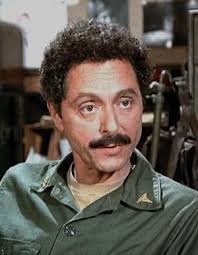 My obituary of Allan Arbus is online at the Guardian, you can link to it here, and should be in the paper paper soon. It is pretty much as I wrote it. I had traced the timeline of his marriage to Diane more fully--they divorced only after Allan moved to LA in 1969 to pursue acting, and along those lines had also suggested that the world-view which Sidney Freedman espouses acts in some ways as a dialectic with Diane's own bleaker perception of the world, and our coping with it. I'd also mentioned that Allan had met his second wife in an acting class, well before the divorce or his remarriage, and I'm curious about the circumstances under which their marriage failed.
My obituary of Allan Arbus is online at the Guardian, you can link to it here, and should be in the paper paper soon. It is pretty much as I wrote it. I had traced the timeline of his marriage to Diane more fully--they divorced only after Allan moved to LA in 1969 to pursue acting, and along those lines had also suggested that the world-view which Sidney Freedman espouses acts in some ways as a dialectic with Diane's own bleaker perception of the world, and our coping with it. I'd also mentioned that Allan had met his second wife in an acting class, well before the divorce or his remarriage, and I'm curious about the circumstances under which their marriage failed.










